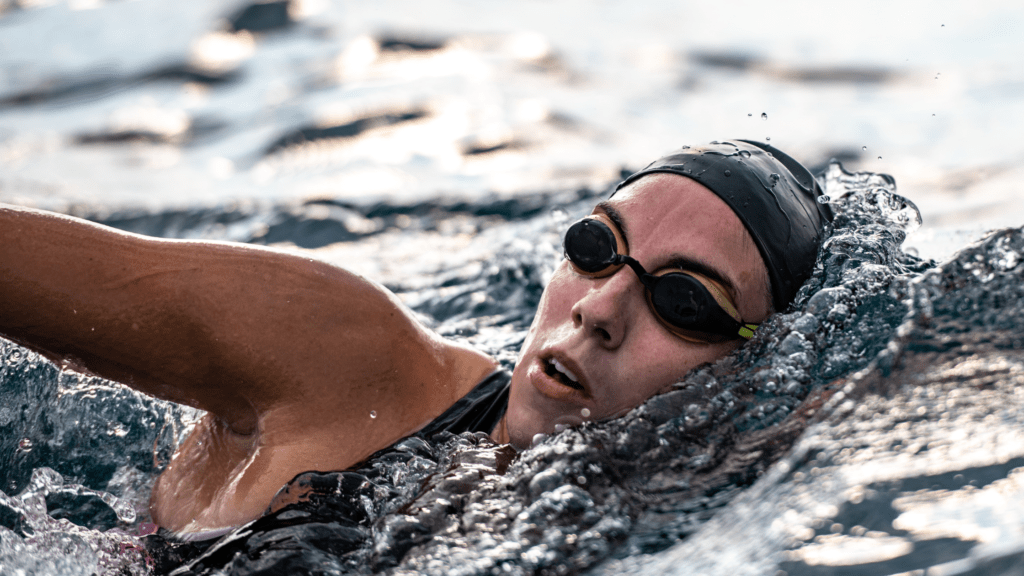
Triathlon Swim Training: Mastering the First Leg
The triathlon is a grueling test of endurance, requiring athletes to excel in swimming, cycling, and running. While many focus on the cycling and running portions, a strong swim leg is crucial for a successful race. A poor swim can significantly impact your overall performance, draining energy and hindering your transition into the next disciplines. This article delves into essential tips and techniques to improve your triathlon swim, covering everything from pre-race preparation to in-water strategies.
I. Pre-Race Preparation: Laying the Groundwork
A successful triathlon swim starts long before race day. Thorough preparation is key, encompassing physical training, equipment selection, and mental preparation.
A. Swim Training:
-
Consistency is King: Regular swim training is paramount. Aim for at least three sessions per week, focusing on both distance and technique. Vary your workouts to include intervals, endurance swims, and drills to build strength, stamina, and efficiency.
-
Technique over Distance: While long swims build endurance, prioritizing proper technique is crucial. A streamlined, efficient stroke will conserve energy and allow you to swim faster with less effort. Consider working with a swim coach to identify and correct any flaws in your stroke. Common issues include high hips, inefficient arm pull, and poor body rotation.
-
Open Water Practice: Open water swimming differs significantly from pool swimming. Practice in open water as often as possible to get accustomed to the unpredictable conditions, such as currents, waves, and other swimmers. This experience will significantly reduce anxiety and improve your race-day performance.
-
Strength Training: Incorporate strength training into your routine. Strong core muscles are essential for maintaining body position and generating power in the water. Exercises such as planks, side planks, and Russian twists will significantly improve your swim efficiency.
-
Flexibility and Mobility: Flexibility and mobility are often overlooked but are crucial for preventing injuries and maintaining good form. Regular stretching and dynamic warm-ups will improve your range of motion and prepare your body for the demands of swimming.
B. Equipment Selection:
-
Wetsuit: A wetsuit can significantly improve your buoyancy and reduce drag, leading to faster swim times. However, it’s essential to choose the right wetsuit for your body type and water temperature. A properly fitted wetsuit will enhance your performance without restricting your movement.
-
Goggles: Choose goggles that provide a clear, comfortable fit and prevent water leakage. Consider anti-fog goggles for improved visibility, especially in open water.
-
Swim Cap: A swim cap reduces drag and keeps your hair out of your face. Silicone caps are generally preferred for their durability and water resistance.
C. Mental Preparation:
-
Visualization: Visualize yourself swimming smoothly and efficiently during your race. Mentally rehearse the start, the swim itself, and the transition to the next leg. This can significantly reduce anxiety and boost confidence.
-
Positive Self-Talk: Maintain a positive attitude and focus on your strengths. Replace negative thoughts with positive affirmations.
-
Race Strategy: Develop a race plan that accounts for the course conditions, your fitness level, and your goals. This will help you pace yourself effectively and avoid burnout.
II. Race Day Strategies: Executing the Plan
Race day requires a calm, focused approach. Follow these strategies for a successful swim leg:
A. The Start:
-
Strategic Positioning: Position yourself strategically at the start, avoiding the chaos of the initial scramble. Aim for a spot where you can get a clear start without getting bumped or entangled with other swimmers.
-
Controlled Start: Avoid a frantic start. Maintain a controlled pace, focusing on your technique rather than sprinting. This will help you conserve energy for the remainder of the swim.
-
Sighting: Regularly sight to ensure you are heading in the right direction. This is crucial in open water, where currents and waves can easily throw you off course.
B. During the Swim:
-
Drafting: Drafting strategically behind other swimmers can significantly reduce drag and conserve energy. However, be mindful of not getting too close to the swimmer ahead, maintaining enough space for safety and maneuverability.
-
Breathing Pattern: Establish a consistent breathing pattern early in the swim. This will help maintain your rhythm and prevent fatigue.
-
Body Position: Maintain a high body position, keeping your hips up and your legs streamlined. This will reduce drag and improve efficiency.
-
Stroke Rate and Power: Find a balance between stroke rate and power that works for you. A higher stroke rate may be suitable for shorter distances, while a more powerful stroke may be better for longer swims.
-
Dealing with Other Swimmers: Be aware of other swimmers around you, leaving sufficient space for safe passing. Communicate politely when passing, using verbal cues to avoid collisions.
C. The Finish:
-
Sprint to the Finish: If energy permits, sprint to the finish to secure a faster time.
-
Smooth Transition: Practice your transition from swimming to cycling beforehand. A smooth transition will save you precious seconds and help you maintain momentum.
III. Post-Race Recovery:
-
Hydration and Nutrition: Replenish fluids and electrolytes lost during the swim. Consume a balanced meal or snack to aid in recovery.
-
Cool-down: Engage in gentle stretching or light exercise to promote blood flow and reduce muscle soreness.
-
Analysis and Improvement: Reflect on your performance, identifying areas for improvement. Use this feedback to inform your future training plans.
IV. Common Mistakes to Avoid:
-
Ignoring Open Water Practice: Open water swimming is vastly different from pool swimming. Lack of open water experience can lead to disorientation and anxiety on race day.
-
Overtraining: Overtraining can lead to injury, burnout, and diminished performance. Listen to your body and rest when needed.
-
Neglecting Technique: Focusing solely on distance without improving technique will hinder your progress. Proper technique is essential for efficiency and injury prevention.
-
Poor Nutrition and Hydration: Proper nutrition and hydration are essential for optimal performance. Fuel your body appropriately before, during, and after your swim.
-
Ignoring Equipment: Investing in appropriate and properly fitting equipment can make a significant difference in your swim performance.
By diligently following these tips and strategies, you can significantly improve your triathlon swim performance and set yourself up for a successful race. Remember that consistent training, proper technique, and mental preparation are key to mastering this crucial first leg of the triathlon. With dedication and the right approach, you’ll conquer the water and move confidently into the next stages of your race.



